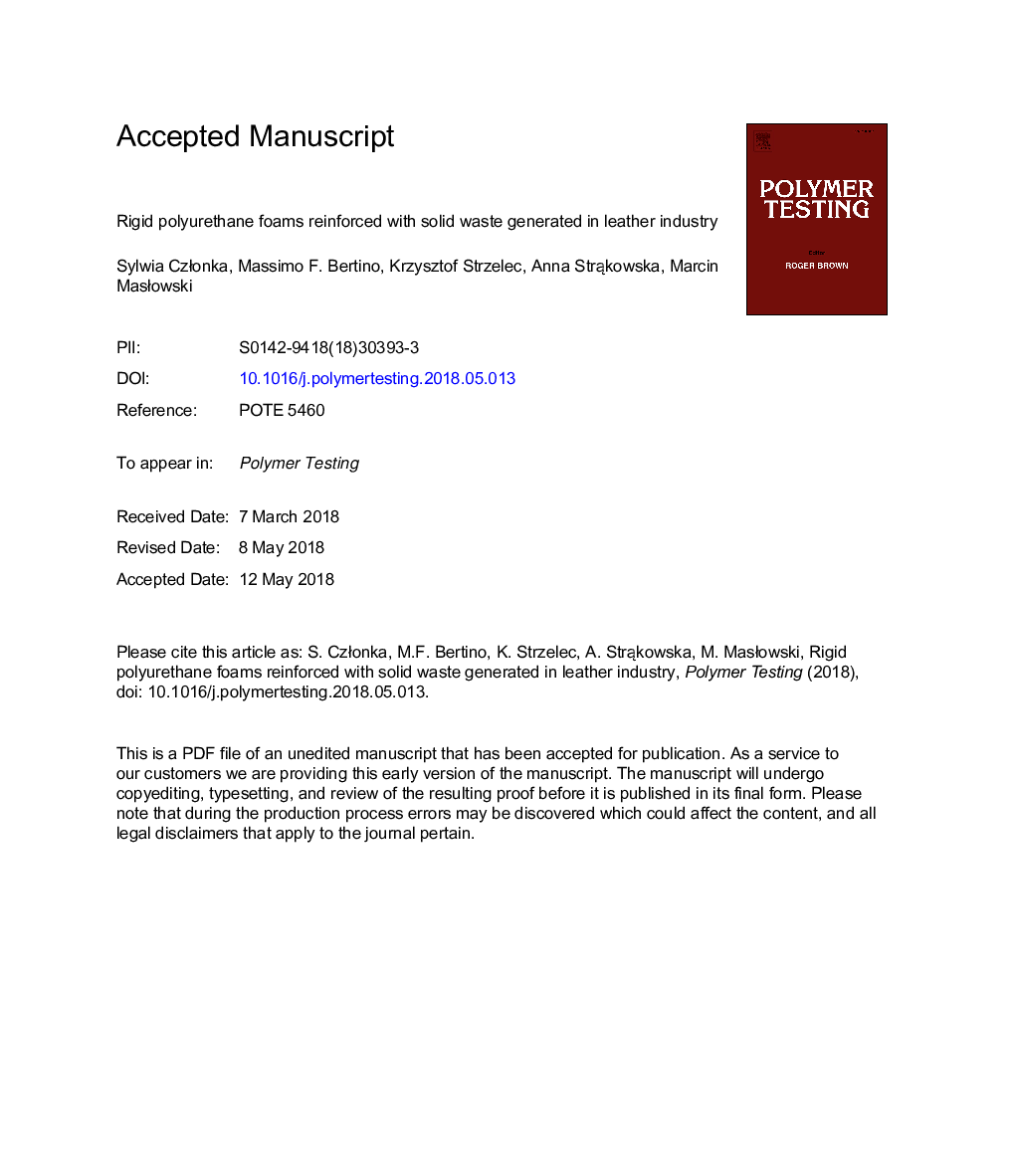| Article ID | Journal | Published Year | Pages | File Type |
|---|---|---|---|---|
| 7824703 | Polymer Testing | 2018 | 50 Pages |
Abstract
Buffing Dust (BD), a proteinous solid tennery waste, was used as a reinforcement filler in rigid polyurethane foams (RPUFs). RPUFs were modified with buffing dust, in the range of 0.1-5â¯wt% in relation to the total polyol mass. It was found that BD addition leads to noticeable changes in several properties, mainly foam morphology, apparent density, thermal conductivity and mechanical strength. The results show that compared to the reference foam, composition modified with 0.1â¯wt% of BD provides higher density (36.9â¯kg/m3), greater compression strength (216â¯kPa), less water uptake (9% after 24â¯h) and comparable thermal conductivity (0.026â¯W/m·K). The results obtained in this study confirm that the addition of BD over a certain optimal level has a negative effect on the cell morphology, which leads to deterioration of the physico-mechanical properties of the modified foams.
Related Topics
Physical Sciences and Engineering
Chemistry
Organic Chemistry
Authors
Sylwia CzÅonka, Massimo F. Bertino, Krzysztof Strzelec, Anna StrÄ
kowska, Marcin MasÅowski,
